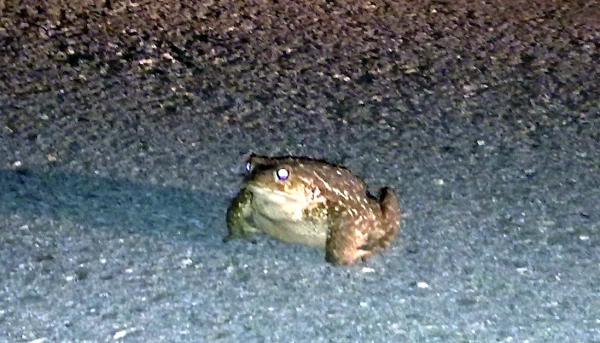welcome to the SINTRA POWER TRAIL

This is part of a sequence, although it can be found and logged. For further detail see SPT#1 - Águas de Cascais ADC N7 (GC2W23N)
A CACHE
Este pequeno anfíbio, cujo nome científico é Alytes obstetricans, é acastanhado ou acinzentado e pode apresentar pintas escuras no dorso. O seu nome deve-se ao facto de os machos da espécie transportarem consigo os embriões (na parte posterior do corpo). A dieta desta espécie é composta por pequenos insectos e gastrópodes. 
Esta espécie é predominantemente nocturna, e não ultrapassa os 52mm de tamanho. Trata-se de um tipo de anfíbio relativamente comum em Portugal.
Os sapos parteiros reproduzem-se entre Fevereiro e Julho. Durante este período é possível ouvi-los a "cantar". Todavia, o facto de se encontrarem normalmente bem escondidos em lugares escuros e húmidos não torna fácil a sua localização.
Os inúmeros pequenos cursos de água e charcos de Sintra são locais de fixação destes animais mas tropeçámos num a atravessar a estrada e não resistimos a tirar um boneco.
Simples de encontrar, é só seguir as instruções da dica. Boa sorte.
THE MIDWIFE TOAD
This small amphibious, whose scientific name is Alytes obstetricans, is brownish or grayish and may have dark spots on their back. Its name is due to the fact that the males of this species carry with them the embryos (on the back of the body). The diet is composed of small insects and gastropods.
This species is predominantly nocturnal, and does not exceed 52mm in length. This is a sort of amphibious fairly common in Portugal.
The midwife toads reproduce themselves between February and July. During this time you can hear them "sing". However, the fact of living in well hidden places, humid and dark sites, doesn’t make it easy to be found.
The innumerable small waterways and pools of water in this Sintra forest are living sites for these animals but we stumbled in one, crossing the road, and we couldn’t resist taking a picture.
Easy to find, just follow the instructions on the tip. Good luck.
